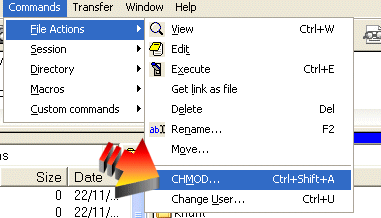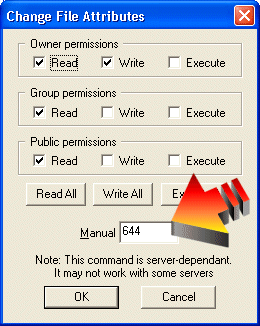Table of Contents
Nucleus CMS Tips & Suggestions
This file contains tips and suggestions that might prove useful.
Getting your archives into search engines like Google
Note: The solutions described here might not work on your system.
Nucleus creates archives dynamically on users requests. The URL is then of the form index.php?archive=2001-09&blogid=1. Unfortunately, Google and other search engines don't like to index pages with a question mark in it, or with too much arguments. This is because their spiders might get trapped going too deep.
Two solutions are listed below. They're not guaranteed to work, however (wether they work or not depends on the webserver configuration)
Fancy URLs
Nucleus v2.0 has a new option in the global settings 'URL mode'. Setting it to 'Fancy URL' mode, and performing the steps below, will make your URLs look like http://example.org/item/1234 instead of http://example.org/index.php?itemid=1234. Search engines like these URLs better.
Installation steps:
- Copy all files from the
/extra/fancyurlsdirectory (except forindex.html) to your main nucleus dir (that's where yourindex.phpandaction.phpfile are) - If you have an already existing
.htaccessfile (most ftp-programs don't show hidden files by default, so don't start uploading it without checking your server). If you do, download that old one first, and copy the contents of the new.htaccessfile (from the fancyurls folder) in your old one, and upload that… - Edit the
fancyurls.config.phpfile so that$CONF['Self']points to your main directory.
NOTE: this time, and only this time, the URL should NOT end in a slash - Also edit the
$CONF['Self']variable in yourindex.php, if you don't want to end up withindex.php/item/1234urls when people come via that way - Enable 'Fancy URLs' in the Nucleus admin area (nucleus management / edit settings)
- Off you go!
When it doesn't work (e.g. you receive an Internal Server Error): bad luck… Remove the files again (don't forget the hidden file .htaccess) and reset the Fancy URLs setting in the admin area.
mod_rewrite
This second possible solution will only work on servers running Apache, and when you have the right to do so. What we will do is 'disguise' the archives as regular HTML pages
Create a file called .htaccess (leading dot!) with the following contents:
RewriteEngine On RewriteRule ^archive-([0-9]+)-([0-9]+)-([0-9]+).html+ index.php?archive=$2-$3&blogid=$1 RewriteRule ^item-([0-9]+).html+ index.php?itemid=$1 RewriteRule ^archivelist-([a-z]+).html+ index.php?archivelist=$1
Now upload this file to the directory that contains index.php and config.php. Open your browser and try to open archive-1-2001-09.html. If it works, continue to read. If you get a 500 error (internal server error), it does not work on your server, so delete the .htaccess file.
Now all you have to do is to update the link to your blog archives into archivelist-shortblogname.html and make the following changes to your archivelist item template:
<a href="archive-<%blogid%>-<%year%>-<%month%>.html">...</a>
And now, wait until Google comes spidering again…
How to set file/dir permissions
To enable some features of Nucleus, changing file permissions is required. A small guide on how to do this using an FTP client is given below.
First of all, you'll need an FTP client that supports file permission changing. In this example, we'll use CuteFTP. You can download a free trial version if you don't have it.
To change the permissions of a file or directory, create an FTP connection to your website and search for that file or directory in the hierarchy. Select the file by clicking on it.
Open the menu Commands > File Actions > CHMOD… for a file, or Commands > Directory > CHMOD… for a directory.
A window will pop up:
On the bottom, you can enter the code that's given in the documentation (e.g. 755 or 444). Click the OK button and the changes will be applied. You're finished now.
How to restore backups
Nucleus has a backup/restore option that super-admins can use to create a backup of the database. It's strongly encouraged to take a backup regularly (weekly or so). The backup-files that are returned are files containing standard SQL-queries, that reconstruct the state of the database as it was when the backup was created.
While backing up is easy, and restoring should also be easy, problems might pop up when your database is fucked up beyond repair. In that case, the repair function might become unaccessible. Below are some ways you can restore your database in that case:
If you're backup was gzipped, unzip if first (it contains an sql file)
Possibility 1: Web-based
If you have a web-based interface through which you can manage your database (e.g. PHPMyAdmin), there's most likely an option where you can import a file into the database. Use this function to restore your database.
Possibility 2: Shell-access
If you have a shell account, restoring a backup can be done by running the mysql program with the following arguments:
mysql -u username -p -h hostname databasename < backupfile.sql
How to create a new weblog
1. Creating the weblog
As a superadmin, you can create new weblogs from the 'Nucleus Management' screen. They will then show up on the admin area.
2. Accessing your new weblog
There are several ways in which you can make your new weblog accessible.
- Using a
blogidattribute in the URL:
http://yourhost.com/index.php?blogid=2
(You can find the blogid in the admin area, when hovering over the blog name in the blog list)
- By creating a copy of the
index.phpfile (in this example, our file is namedcopy.php), and editing the contents of the file to look like this:
<?php $CONF['Self'] = 'copy.php'; include('./config.php'); selectBlog('shortblogname'); selector(); ?>
(You can find the short blog name in the admin area, when hovering over the blog name in the blog list)
Extra methods to use in copy.php
The selectBlog is only one of the methods which you can use in copies of index.php files. Here's a list of the available calls:
| Method | Description |
|---|---|
selectBlog('shortblogname'); | Makes sure a certain blog gets selected |
selectSkin('skinname'); | Makes sure a certain skin gets selected |
selectCategory(1234); | Makes sure a certain category gets selected. Takes a category id as argument. Also accepts a category name (keep in mind that this can cause problems if multiple categories have the same name) |
selectItem(1234); | Makes sure a certain item gets selected |
selectLanguage('french'); | Makes sure a certain language gets used (note: might produce PHP warnings) |
Make sure that these methods are called after the include('./config.php') statement, and before the selector(); statement!
Creating a blog in a subdirectory
The process for creating a blog in a subdirectory (http://yourhost.com/sub/ where the main weblog is in http://yourhost.com/) is similar, with the only change that you'll need to replace include('./config.php'); by include('../config.php');
XHTML Support
If you see tags like <br /> in the source code of your webpage, it's because the output of Nucleus (except the things defined by templates and skins, of course) is compliant to the XHTML 1.0 standard from the W3C, which is the successor of HTML 4. This way, Nucleus is ready for the future of the web. As far as I know, this XHTML support does not cause any trouble with older browsers and is correctly interpreted.
What this means, is that you can perfectly create an XHTML-compliant site by using correct skins and templates. The default Nucleus skin is XHTML-compliant, but uses the “HTML 4 Loose” doctype. This way, users not knowing XHTML can not create documents with a false XHTML doctype.

